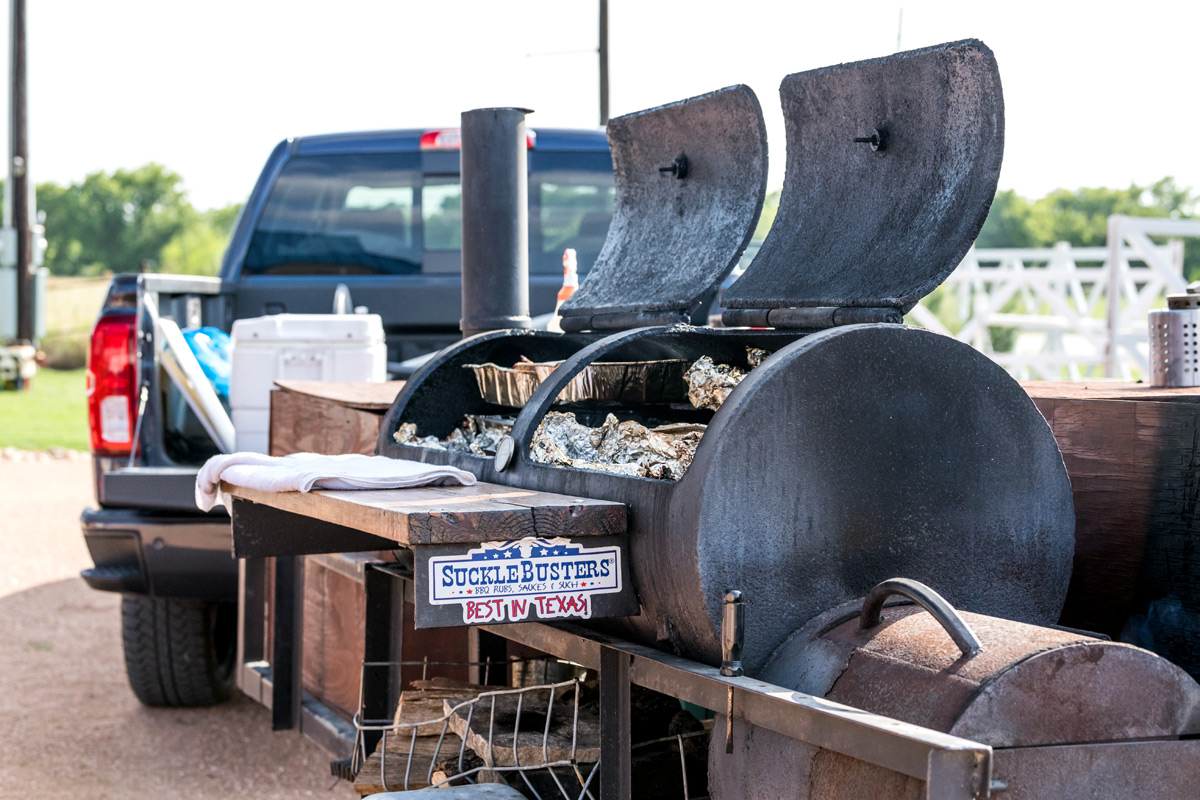Food
Learn How To Smoke Food Like A Pro
If you’ve ever sunk your teeth into a rack of well-made ribs, hewn off a chunk of smoky brisket or even topped your bagel with slices of tender smoked salmon, you know how good smoked food is. Few cooking techniques can claim the cult-like following that smoking has earned.
A cousin of BBQ, smoking slows the cooking process and enhances flavor by exposing food to the nuance of smoldering coals, allowing the meat to tenderize and imparting the flavor with wood and smoke. But like many cooking methods, not everyone agrees on how best to smoke your meat. Here are our tips.
Choose Your Smoker
The tools of the trade that make smoked foods possible have a special place in their owner’s hearts. Until recently, there was really only one way to smoke food. New developments like pellet and electric smokers have made smoking food more accessible than ever before. If you’re mostly interested in making the process easy for yourself and producing juicy, tender meats, you won’t go wrong with one.
Traditionalists will tell you the only right way to smoke food is over a low-heat wood fire. Many smokers resemble traditional barbeque grills but place a little more room between the flames and the grill grate to make space for smoke to cool and rise. You can expect to spend anywhere from $200 to $500 on your first smoker. Don’t worry, they last while.
Fuel and Flavor
The type of wood you choose will have a dramatic effect on the flavor of your final product, so you want to give it some thought. Lump charcoal is preferable to briquettes since it doesn’t contain the binders and other chemicals that can influence the flavor of your smoke. Depending on your recipe, you might use hickory, pecan, cherry or even whiskey-infused oak to inject a specific taste into your favorite cut.
Not all types of wood will pair well with the different proteins you might cook on a smoker. For example, you might choose to smoke up a platter of pork chops using apple wood to add some sweet flavor before topping your chops with homemade applesauce. Were you making a beef brisket, wood such as hickory, maple or oak might better serve you.
You can find plenty of meat-to-wood smoking charts out there to help guide you on your smoking sortie. We recommend this easy-to-read one from the team at Smoking Meat Geeks. It’s also a handy reference when your smoking endeavors take you out of the meat category into less traditional dishes like baked goods and veggies.
Favorite Smoked Treats
When people think of smoked foods, they tend to think of ribs, and for a good reason. A good slab of smoked baby back ribs is one of the dishes that made this technique famous. But you can find lots of other recipes to make with your smoker. Dishes range from pork and beef to chicken to more exotic flavors like duck, smoked fish, vegetables and desserts.
Jeff Phillips is a chef and creator of the website Smoking-Meat.com, so you would expect him to be an authority on the topic. Jeff’s advice to those who are new to smoking is not to be too intimidated by the rigid traditions that surround this time-honored art form. Yes, you can make good food using those techniques, but new ideas are also good.
As an example, Jeff cites his 3-2-1 method of cooking pork ribs. In the past, people thought ribs to be “too tender” if the meat was falling off of the bone. It’s funny to think about when you consider that other slow-cooked meat like spare ribs, lamb and even goose in some eastern European dishes is considered flawlessly done if you can achieve this effect.
Jeff’s method requires smoking the meat on the open grate for three hours and then wrapping it in foil for two to ultra-tenderize it. After the middle two hours have passed, you remove the foil and place the food back on the open grate for the final hour for rib meat that melts in your mouth. Remember that when you smoke using indirect heat, there’s no need to flip the ribs the way you might on a barbeque.
Slow and Low
The reason a pellet or electric smoker better serves many beginners is that smoking demands you keep your smoker between about 212 and 230 degrees Fahrenheit to achieve your desired results. It’s not a fast process, and that can lead you to spend a lot of time monitoring your smoker. If you’re using a traditional wood model, you’ll learn the hard way how to manage temperature like a pro.
But then, half the fun of sharing the delicious meals you’ll make on your smoker is preparing them with family and friends closeby. So gather your loved ones, throw a few beers in the ice chest and kick back while you cook something truly delicious. You’ll be the man or woman of the hour.


















Recent Comments